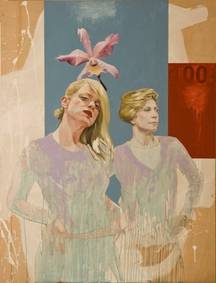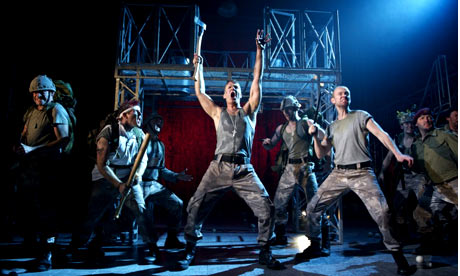Almost a year ago, I wrote a blog about some of the tourist sites in London that are often overlooked in favour of the more prominent and better known sites. Recently, whilst in London, I embarked on another tour of London to find some more of these hidden treasures.
I was inspired to do this after seeing a programme on Sky Arts 2 about Dickens’ England and from reading The Stories Behind London’s Streets by Peter Thurgood and London by Edward Rutherfurd. I have always had a fascination for the city I was born in and have enjoyed visiting many places in and around this great city but cannot claim to truly know the place.
Dr Samuel Johnson said (quoted in The Stories Behind London’s Streets) “
Sir, if you wish to have a just notion of the magnitude of this city, you must not be satisfied with seeing its great streets and squares, but must survey the innumerable little lanes and courts. It is not in the showy evolutions of buildings, but in the multiplicity of human habitations which are crowded together that the wonderful immensity of London consists.”
Behind every street name lies a story about the people who have lived, worked and even died there. Here are just a few of the places I visited and the stories I uncovered.
Bleeding Heart Yard
Bleeding Heart Yard is a cobbled courtyard in the Farringdon area of London. It is mentioned in Charles Dickens’ novel Little Dorrit as being the home of the Plornish Family. “...
A place much changed in feature and in fortune, yet with some relish of ancient greatness about it. Two or three mighty stacks of chimneys, and a few large dark rooms which had escaped being walled and subdivided out of the recognition of their old proportions, gave the Yard a character. It was inhabited by poor people, who set up their rest among its faded glories, as Arabs of the desert pitch their tents among the fallen stones of the Pyramids; but there was a family sentimental feeling prevalent in the Yard, that it had a character.
As if the aspiring city had become puffed up in the very ground on which it stood, the ground had so risen about Bleeding Heart Yard that you got into it down a flight of steps which formed no part of the original approach, and got out of it by a low gateway into a maze of shabby streets, which went about and about, tortuously ascending to the level again. At this end of the Yard and over the gateway, was the factory of Daniel Doyce, often heavily beating like a bleeding heart of iron, with the clink of metal upon metal. The opinion of the Yard was divided respecting the derivation of its name. The more practical of its inmates abided by the tradition of a murder; the gentler and more imaginative inhabitants, including the whole of the tender sex, were loyal to the legend of a young lady of former times closely imprisoned in her chamber by a cruel father for remaining true to her own true love, and refusing to marry the suitor he chose for her. The legend related how that the young lady used to be seen up at her window behind the bars, murmuring a love-lorn song of which the burden was, 'Bleeding Heart, Bleeding Heart, bleeding away,' until she died.”
The murder mentioned by Dickens is that of Lady Elizabeth Hatton, the widowed daughter in law of Sir Christopher Hatton, one time consort of Queen Elizabeth I. Legend has it that during her annual winter ball in January 1662, a strange man entered the house and danced with Lady Elizabeth before leading her out into the gardens. The lady was not seen again that night but the following morning her body was found in a corner of the courtyard outside the house. She had been mutilated and the frozen snow was stained with her blood. When she was found, her heart was still pumping blood onto the cobblestones. Who the mysterious man was, no one knows although it is rumoured that he was a prominent European Ambassador. Other stories say that Lady Elizabeth was an unvirtuous woman who had made a pact with the devil but then turned away from him in favour of others. To exact his revenge on her, he had appeared in human form and murdered her.
It is said to this day that Lady Elizabeth’s ghost still returns to the cobbled street to remove all traces of blood from the street – now called Bleeding Heart Yard.
Saffron Hill
Bleeding Heart Yard lies between Ely Place and Saffron Hill in London – an area which has changed considerably over the years. During the 18th and 19th Centuries Saffron Hill became renowned for its brothels and vagabonds. The Fleet River once ran where Farringdon road is now and provided a great means of escape for villains pursued by the law. Charles Dickens lived nearby and used Saffron Hill (and Street) as Fagin’s lair in his novel Oliver Twist; it is also mentioned in Sir Arthur Conan Doyle’s story The Adventure of the Six Napoleons as the home of the Venucci family.

The One Tun Pub located on Saffron Hill (so called because of the saffron that used to grow on the estate there) was often frequented by Charles Dickens and is mentioned in Oliver Twist by the name of The Three Cripples. The One Tun pub started trading in 1759 and is one of two taverns still trading under that name. The name refers to the size of the largest of the casks used to store the beer and wine, its capacity being four hogsheads or 252 gallons.
Ely Court
If you manage to find this little alleyway, it will take you to the Ye Old Mitre Tavern – a pub which dates back to 1546! It was originally built for the servants of the palace of the Bishops of Ely. The palace was their London base and played host to Henry VIII and Elizabeth I. After the reformation, Elizabeth I forced the bishops to rent some of their land to her courtier Sir Christopher Hatton (whose daughter in law was supposedly murdered in Bleeding Heart yard) and the area became known as Hatton Garden. It is now the centre of London’s diamond and jewellery trade.
The pub and the palace were demolished in 1772 although the pub was later re built. The preserved trunk of a cherry tree in the corner of the front bar marked the boundary of the diocese and the land leased to Sir Christopher Hatton, and legend has it that Elizabeth I danced the maypole around it.
Technically the land around Ely Court and Ely place come under the control of the diocese of Ely in Cambridgeshire and until the last century even the city police had no jurisdiction here.
There is an account that on Saturday 3rd December 1910 two men entered the One Tun Pub in Saffron Hill. They were described as shabbily dressed and soaking wet. The landlord remembered them well for the fact that they barely spoke any English. They stayed for about an hour. That same evening two men were seen trying to break into a nearby jeweller’s shop in Hatton Garden. The police were called and pursued the men to Ely Court and into Ye Olde Mitre Tavern. As the Tavern came under the jurisdiction of the Diocese of Ely, the police returned to their station and called for the Cambridgeshire police. Needless to say, by the time they arrived, the villains were nowhere to be seen.
Ely Place
If you continue down Ely Court, you eventually come to Ely Place where you will find the oldest Catholic Church in Britain. St. Ethelreda’s church dates back to the 13th century and is all that remains of Ely Palace. The church was built by Bishop William de Luda as the chapel of St. Ethelreda in the palace around 1260.
Throughout the years, Ely Place has featured heavily in both historical and fictional accounts. It was in Ely Palace in William Shakespeare’s Richard II that John O Gaunt makes one of his most famous speeches
“This royal throne of kings, this scepter'd isle,
This Earth of majesty, this seat of Mars,
This other Eden, demi-Paradise,
This fortress built by Nature for herself
Against infection and the hand of war,
This blessed plot, this Earth, this realm, this England.”
In Dickens’ book David Copperfield, David visits Ely Place to see his sweetheart Agnes at the home of Mr Waterbrook.
Ely Palace is also mentioned throughout history, particularly during Tudor times. For more information on the history of Ely Place and St. Ethelreda’s church
http://www.stetheldreda.com/history.html.
Interestingly, in 1666 as The Great Fire of London swept through the City, the church of St. Ethelreda’s despite being in the path of the fire was saved when the wind changed direction. By the time the fire burnt out, over two-thirds of London had been destroyed – but the church was untouched.
Mediaeval accounts also tell of the strawberry fields and saffron hills which made up the gardens of St. Ethelreda’s and are again mentioned in Shakespeare’s Richard II. To this day, the strawberry fields are still commemorated every year in June with the annual Strawberry Fayre held in Ely Place to raise money for charity.
To be continued...........









































